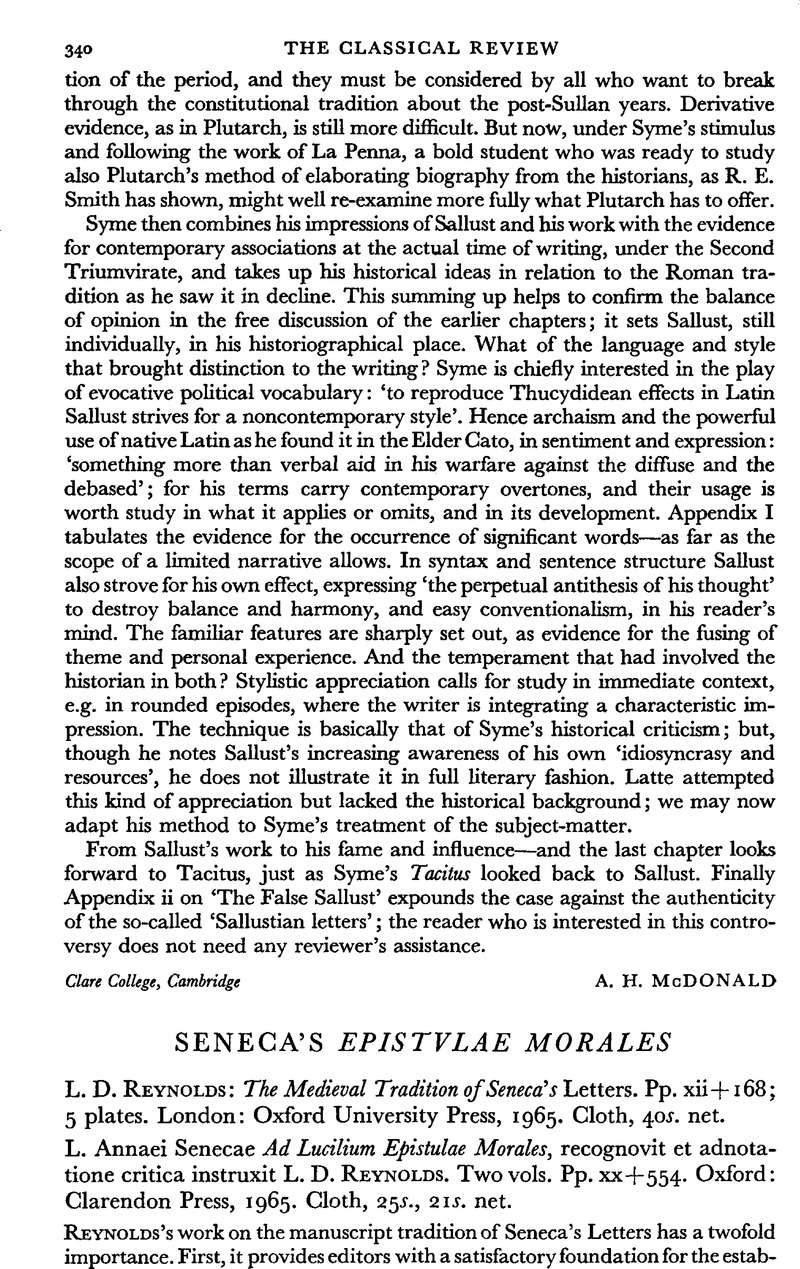No CrossRef data available.
Published online by Cambridge University Press: 27 February 2009

page 341 note 1 Timpanaro, S., La genesi del metodo del Lachmann (1963)Google Scholar; see C.R. lxxviii. 208–9.
page 341 note 2 Foerster, O., Handschriftliche Untersuchungen zu Senekas Epistulae Morales und Naturales Quaestiones (1936).Google Scholar
page 341 note 3 … the vast majority of 〈the later manuscripts〉 derive from δ, and … δ in fact fathered the late-medieval vulgate which passed into the printed editions and formed the basis of our text until well into the last century … δ readings are still found in our modern texts, not because they should be there, but because they have always been there' (Trad. 23–24).
page 342 note 1 For a discussion of the possible reasons for this situation see Timpanaro, op. cit. 112–35.
page 342 note 2 For instance, 16. 4 occupavit deus p: deus occupavit αγ; 19. 4 amicitia olim p: olim amicitia αγ; 56. 10 sui p: suam αγ (see below). At 15. 8 it is the reading of p that is obelized; does not method demand that it should be that of αγ? Note, however, that at 65. Reynolds prefers αγ to p–verisimillimum: verissimum.
page 343 note 1 The play cleavage in Epp. 1–88 may possibly derive from a similar state of affairs.
page 343 note 2 Préchac posits a Visigothic stage in the tradition: Reynolds's severe remarks on ‘the romance of the palaeographical handbook’ (Trad. 63) are much to the point. Cf. Ver-dière's Merovingian manuscript of Grattius, C.R. Ixxix. 57.
page 343 note 3 All the forty twelfth-century manu- scripts known to him have been examined, and as many of the later manuscripts as were readily accessible, together with a few others (Trad. 68–69).
page 343 note 1 At 120. 13 (p. 514. 7) we are told that Gends but we do not learn where it begins; contrast 121. 12 (p. 519. 13) on p. One oddity is ‘ab Arnim’ but ‘von Jan’. If latinization is really desirable in such cases ‘de’ (as in Hense) is surely preferable.
page 344 note 1 My interpretation.
page 344 note 2 It is not supported by, for instance, 61.3 finem nostri, 66. 2 ipsa magnum sui decus est, 29 paenitentiam sui, 74. 18 sine ulla nostri laceratione, 79. 18 in omnem pattern sui, 85. 28 in lutela sui, 120. 14 ad summam sui, 124. 6 initium sui.
page 344 note 3 In the Tragedies, ifex-silentio conclusions may be drawn from the edition of Peiper–Richter, the -em spelling is transmitted in two cases(one of them in the Octavia) out of three.